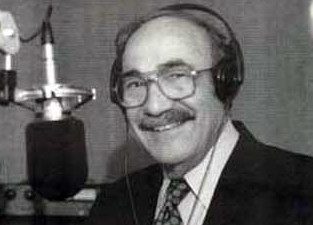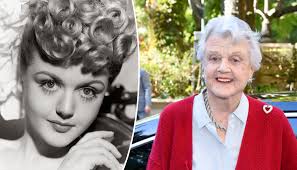➦In 1919...Radio Corporation of America (RCA) was created.At the end of World War I, the Marconi Wireless Telegraph Company of America was the only company in the United States that was equipped to operate transatlantic radio and telegraph communications. The United States government found this unacceptable since the Marconi Wireless Company of America was entirely owned by a foreign company—the British Marconi Company.
At the prompting of Franklin D. Roosevelt, who was undersecretary of the navy at the time, General Electric (GE) formed a privately owned corporation to acquire the assets of American Marconi from British Marconi. On October 17, 1919, the Radio Corporation of America (RCA) was incorporated and within a month had acquired those assets.
General Electric was the major shareholder of RCA and the two companies cross licensed their patents on long distance transmission equipment. A year later American Telephone & Telegraph (AT&T) bought into RCA and also cross licensed patents with the new company. Transoceanic radio service began that same year with a major station in New Jersey broadcasting to England, France, Germany, Norway, Japan, and Hawaii. The world’s first licensed radio station also began transmitting in 1920. This station, KDKA of Pittsburgh, was owned by the Westinghouse Company.
In 1921, Westinghouse, too, joined the ranks of asset holders of RCA; in exchange for selling Westinghouse radio equipment to the public, RCA was permitted access to Westinghouse patents.
RCA entered the broadcasting field in 1921 with its transmission of the Dempsey-Carpentier fight in Jersey City, New Jersey. Using a transmitter borrowed from the navy. The company began full-time radio broadcasting shortly afterwards when it became an equal partner with Westinghouse in station WJZ of Newark, NJ.
RCA continued to expand its transoceanic communications operations and opened two more broadcasting stations, in New York and Washington, D.C. In 1924 RCA transmitted the first radio-photo, a portrait of Secretary of State Charles Hughes. This transmission was made from New York to London and back to New York, where it was recorded and marked a pioneering development in the history of television. Two years later, in 1926, RCA formed the National Broadcasting Company (NBC). NBC controlled the radio stations owned by RCA, produced radio programs, and marketed these programs to other radio stations, activities which constituted the first radio network. David Sarnoff, the leading figure at RCA during these formative years, had envisioned the radio network as a form of public service, free from advertising, but this proved financially impossible and sponsors were solicited. At this time RCA began selling components manufactured by the Victor Talking Machine Company of Camden, New Jersey.
Product innovation abounded in this era. In 1927 RCA introduced the first Radiotron tube. This radio tube was the first to operate on alternating current, thereby eliminating the need for batteries—a crucial step in the development of mass-produced electric radios.
 |
| David Sarnoff |
David Sarnoff became president of RCA in 1930, the year legal problems concerning the company’s monopoly status began. The Justice Department filed an antitrust suit against RCA seeking to strip RCA of all the patents it had gained. The battle ended two years later; RCA retained all of its patents but General Electric, AT&T, and Westinghouse were forced to sell their interests in the company. The General Electric association was remembered in NBC’s trademark three-note chime—G,E,C—which stands for General Electric company.
By this time RCA’s various businesses included broadcasting, communications, marine radio, manufacturing and merchandising, and a radio school. The year after it became an independent company, RCA moved into its new headquarters—the RCA Building in Rockefeller Center in New York City.
➦In 1934..."The Aldrich Family" premiered on radio.
 |
| Ezra Stone, Jackie Kelk 1947 |
The creation of playwright Clifford Goldsmith, Henry Aldrich began on Broadway as a minor character in Goldsmith's play What a Life. Produced and directed by George Abbott, What a Life ran for 538 performances.
When Rudy Vallee saw the play, he asked Goldsmith to adapt it into some sketches for his radio program, and this was followed in 1938 by a 39-week run of a sketch comedy series on The Kate Smith Hour with Stone continuing in the role of Henry. Kate Smith's director, Bob Welsh, is credited with the creation of the "Hen-reeeeeeeeeeeee! Hen-ree Al-drich!" opening, which eventually became one of the most famous signature sounds in radio.
After finding an audience with Kate Smith's listeners, The Aldrich Family was launched in its own series as a summer replacement program for Jack Benny in NBC's Sunday night lineup, July 2, 1939, and it stayed there until October 1, 1939, when it moved to Tuesday nights at 8 p.m., sponsored by General Foods's popular gelatin dessert Jell-O, which also sponsored Jack Benny at the time. The Aldrichs ran in that slot from October 10, 1939 until May 28, 1940, moving to Thursdays, from July 4, 1940 until July 20, 1944. After a brief hiatus, the show moved to CBS, running on Fridays from September 1, 1944 until August 30, 1946 with sponsors Grape Nuts and Jell-O before moving back to NBC from September 5, 1946 to June 28, 1951 on Thursdays and, then, as a Sustaining program in its final run of September 21, 1952 to April 19, 1953 on Sundays.
The main characters (created by Clifford Goldsmith) never age. Henry Aldrich (portrayed by Ezra Stone, Vic Jones and Bobby Ellis) is one of those types of teenagers everyone has met at sometime during life, as is his best buddy, Homer Brown (Jackie Kelk, Jack Grimes, Johnny Fieldler). More characters: Mary (Henry's sister).
The show was a top-ten ratings hit within two years of its birth (in 1941, the show carried a 33.4 Crossley rating, landing it solidly alongside Jack Benny and Bob Hope). Earning $3000 a week, Goldsmith was the highest paid writer in radio, and his show became a prototype for the teen-oriented situation comedies that followed on radio and television.
➦In 1938...NBC moved its studios to the corner of Sunset and Vine, the “Crossroads of the World”.
The new Hollywood Radio City drew thousands of visitors ready to fill studio-audience seats for NBC’s popular programs.
➦In 1939...the radio adventure serial Captain Midnight premiered from the studios of WGN Chicago. Within the year it was appointment listening for kids coast-to-coast, nightly on Mutual
➦In 1966...Jack Sterling aired last show at WCBS 880 AM. Appreciation site: Click Here.
Jack Sterling was born in Baltimore on June 24, 1915, the son of Jack Sexton and Edna Cable. The names of Sexton and Cable were of considerable note in show business, a profession to which Jack's parents devoted forty years. It was natural then that Jack was destined to make his debut as an actor at an early age. He did, at age 2 when he appeared as Little Willie in 'East Lynne.' By the time he was 7, Sterling had worked up a routine as a minstrel and played the same bill as his parents in their coast-to-coast tours. At 15, he was a leading player in the John D. Winninger stock company which toured midwestern cities.He rounded out his experience....and in 1939 settled down in Peoria, Illinois, where he joined WMBD as an announcer and producer.
One year later he moved to WTAD in Quincy, Ill., as program director and from there to CBS Radio's KMOX, St. Louis.
In 1947, after two years at KMOX, he was promoted to program manager of CBS Radio's WBBM, Chicago.
While in that post, CBS Radio sent out a call to its affiliates requesting audition records of its top local talent. Arthur Godfrey's heavy network broadcasting schedule was forcing him to give up his local WCBS Radio morning show and a replacement was needed. Sterling became active in the midwestern search for a candidate but overlooked the person who was to get the job: himself.
"I never considered myself as a candidate because I decided to devote my time to the executive phase of radio," Jack recalls.
"However, WCBS Radio asked for my audition record."
Jack's modesty was underlined by the fact that he would only make the audition record on the condition that WCBS Radio would pay the cost. The station did, and on November 5, 1948, Sterling made his debut on WCBS Radio in the early morning time formerly occupied by Godfrey.
STERLING AIRCHECK: 10th Anniversary Show 1958, (courtesy of Jack Sterling Appreciation website).
Sterling died of lung cancer in 1990 at age 75.
➦In 1991...News anchor Bree Walker Lampley filed a complaint with the FCC against Los Angeles radio station KFI 640 AM saying it personally attacked her by talking about her having a disformed baby.
➦In 2006...Joseph Christopher Glenn died from liver cancer (Born - March 23, 1938), He was a radio and television news journalist who worked in broadcasting for over 45 years and spent the final 35 years of his career at CBS, retiring in 2006 at the age of 68.
His early years in broadcasting were spent working for the American Forces Network while he served in the US Army in 1960.
 |
| Christopher Glenn |
He served as an anchor for two of the CBS Radio Network's signature news roundups carried by affiliates in the United States - The World Tonight (now the CBS World News Roundup Late Edition) from 1988 to 1999, and the morning CBS World News Roundup from 1999 until his retirement. Glenn's final morning broadcast occurred on February 23, 2006.
From 1982 to 1984, Glenn served as a television news anchor, on CBS News Nightwatch, which aired from 2-6 a.m. weekdays.
Glenn made his best-known report on January 28, 1986, when he anchored CBS Radio's live coverage of the launch of the Space Shuttle Challenger. Glenn had just signed off—after what was thought to have been a normal launch—when the shuttle disintegrated, killing the seven astronauts on board. "I had to get back on the air real fast to describe that, and had a very difficult time doing that," he recalled. Glenn and correspondent Frank Mottek (later a reporter at CBS Radio Station KNX L-A) covered the Challenger disaster from that point as a CBS NetAlert bulletin.
Glenn was among the first CBS News correspondents to use a personal computer (an Apple II). Glenn continued to play sound clips in his newscasts from carts long after most of the industry had switched to computer-based playback systems.
Glenn, who suffered from liver cancer, died suddenly on October 17, 2006 in Norwalk, Connecticut. Glenn was posthumously inducted into the National Radio Hall of Fame in Chicago on November 4.
 |
| Ted Hallaman |
➦In 2010...Cleveland radio personality "Tall Ted" Hallaman died at the age of 83. He was born Eleftherios Hallaman and raised in Aliquippa and Ambridge, Pa.
He earned a journalism degree at Duquesne University and started broadcasting there. He worked in Beaver Falls, Pittsburgh and Youngstown before reaching Cleveland and WGAR in 1960. Local critics called him Cleveland's first radio personality.
He quickly became a star. In 1961, the station held a "Take a Pretty Girl to Lunch" contest for a date with him on Valentine's Day. "A married woman won the contest," he later told The Plain Dealer. "She brought her husband along on the date.
Hallaman lost several gigs over the years but found new ones fast. Some of his longer stops were at WHK, WQAL and WKHR. In 1973, Hallaman became president of the local American Federation of Television and Radio Artists.
 |
| George Wendt is 73 |
🎂HAPPY BIRTHDAYS:
- Actor Marsha Hunt is 104.
- Singer Jim Seals of Seals and Crofts is 79.
- Singer Gary Puckett of Gary Puckett and the Union Gap is 79.
- Actor Michael McKean is 74.
Actor George Wendt is 73.Alan Jackson is 63 - Singer-comedian Bill Hudson of The Hudson Brothers is 72.
- Country singer Alan Jackson is 63.
- Actor Grant Shaud (“Murphy Brown”) is 61.
- Animator Mike Judge (“King of the Hill,” ″Beavis and Butthead”) is 59.
- Singer Rene’ Dif (Aqua) is 54.
- Reggae singer Ziggy Marley is 53.
- Actor Wood Harris (“The Wire”) is 52.
- Singer Wyclef Jean of The Fugees is 52.
- Singer Chris Kirkpatrick of ’N Sync is 50.
- Rapper Eminem is 48.
- Actor Sharon Leal (“Boston Public”) is 49.
- Actor Felicity Jones (“The Theory of Everything”) is 38.
- Actor Chris Lowell (“The Help,” ″Private Practice”) is 37.
- Actor Dee Jay Daniels (“The Hughleys,” ″In the House”) is 33.




































